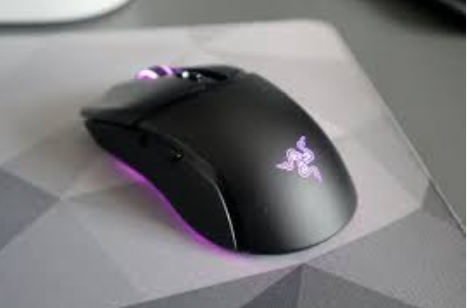There’s a modern expensive gaming mouse out there to suit everyone, from casual gamers to enthusiasts and pro-leaders. As such, there are massive price differences between basic expensive gaming mice from unknown brands to professional wireless mice that cost well over $200. So, why are gaming mice so expensive?
Here are 5 reasons why gaming mice are so expensive:
- Sensors with high sensitivity and DPI.
- Durable and high-quality materials.
- Customizable mice designed for different games.
- High polling rate for faster input.
- Comfortable, ergonomic, and aesthetic design.
If you love gaming, you want the very best mouse for you, your gaming style, and the genres you play. Read on to learn all about why gaming mice are pricier than a regular computer mouse. I’ll help you figure out if your next gaming mouse is worth the premium price tag.
1. Sensors With High Sensitivity and DPI
Nothing’s worse than trying to game with a laggy cursor. Therefore, manufacturers have put a lot of effort into designing gaming mice with highly sensitive sensors. While this is awesome for gamers, sophisticated sensors also mean a higher price.
Higher DPI
Expensive gaming mice achieve a higher DPI than standard mice. But what is actually DPI?
DPI refers to dots per inch (aka pixels per inch). The “dots” are just another way to describe pixels.
DPI tells you how many pixels the cursor moves per inch of mouse movement. So, a mouse with 1200 DPI will move 1200 pixels per inch moved by the mouse. A higher DPI means the sensor can detect smaller mouse movements. And like magic, your cursor moves further.
Sometimes, you’ll read about CPI (that means count per inch). It’s essentially the same as DPI. CPI is just another way of calculating how responsive the on-screen cursor is to mouse movement.
Some gaming mice can reach over 20,000 DPI, far more than anyone needs. The sensor is one of the most crucial parts of a mouse, critical for high speed and accuracy. It’s no wonder that DPI is important to gamers! But it also means that a sophisticated, sensitive sensor will bump up the price of your gaming mouse.
Adjustable Sensitivity
What if you want to adjust your pointer speed to suit different game genres? That’s all good because gaming mice come with software that allows you to do just that! And if you’re using Windows, here’s a link to a Microsoft page describing how to adjust your DPI.
Not to complicate things too much, but your mouse’s ultimate sensitivity while gaming is more than just DPI. To toy around with your pointer speed, consider the following:
- Your gaming mouse’s sensor.
- Your mouse software settings and your computer’s sensitivity settings.
- The game’s built-in sensitivity settings.
According to TheGamingSetup, effective DPI (eDPI) is the best indication of your true gaming sensitivity. It’s the calculation of your DPI combined with in-game sensitivity settings. So, 600 DPI x 2 in-game sensitivity would equal 1200 eDPI.
Also, you can buy gaming mice with built-in DPI buttons — a breezy way to switch between DPI settings.
DPI and Gaming
Does a higher DPI always equal a better gaming experience? Not necessarily. Sure, there are many games where a high DPI is crucial. For example, any speed-based match will need a mouse with a high DPI. But a lower dots per inch can work best for games requiring technical accuracy, like FPS.
And sometimes, you’ll find yourself wanting to change up your DPI mid-game — that’s where those mice with dedicated DPI buttons come in extra handy.
It can be good gaming practice to try out a range of different cursor speeds. Whatever speed you use the most is what you’ll get accustomed to. Have you ever tried using someone else’s mouse, and it just felt so odd? It can take a while to familiarize yourself with faster or slower settings.
While a super-high DPI isn’t necessary, gaming mice do have the power to attain much greater dots per inch than regular mice. (And if required, a gamer can lower the sensitivity).
While it’s fantastic to have these innovative, precise, sensitive sensors, they result in more expensive mice.
2. Durable and High-Quality Materials
If you’re a die-hard gamer, what else do you need in a mouse? You want the mouse to be made of durable, premium-quality materials, of course! You need to know that your mouse will keep it together even after the most grueling of battles!
As with many products, you get what you pay for. Gaming mice fall into the following price brackets (with increasingly sophisticated features):
- Cheaper options: Less than $50.
- Mid-range: $50–$100.
- Best quality: Over $100.
Nowadays, you can for sure get your paws on some excellent, budget-priced mice (like this Redragon M602 Wireless Gaming Mouse on Amazon.com). But gaming mice are pricier than regular mice due to the high-quality stuff they’re made from.
(Not to mention all the other fancy features I’m discussing in this article.)
3. Customizable Mice Designed for Different Games
Especially when you’re a gaming enthusiast or a pro gamer, you need a mouse that’s best equipped to guarantee you speed and accuracy. Manufacturers of gaming mice have specially crafted their mice to fit the needs of seasoned and serious gamers.
Famous gaming mice brands (e.g., Razer, Logitech, SteelSeries, and BenQ) know that avid and professional gamers alike have specific mouse requirements based on what genre they play.
They also know that gamers are willing to pay a premium to have an edge over their competitors. It’s a win-win situation!
Gaming mice are built with specific features to complement certain genres, like MMO, MOBA, FPS, and RTS. Some gaming mice are designed to be highly customizable. These ones are well-suited to a diverse range of video games.
For example, the Razer Naga Pro Wireless Gaming Mouse (Amazon.com) comes with interchangeable side plates that allow for a 2, 6, or 12-button configuration. Fans of MMOs will appreciate the 12-button option, whereas the 6-button configuration is excellent for MOBAs.
An MMO gamer needs a mouse with customizable buttons that trigger shortcut keys and macros without reaching for the keyboard. Those microseconds could mean the difference between victory and defeat in a high-stakes match!
More (programmable) buttons, increased functionality, and all the rest equal a more expensive mouse.
As the Razer Naga Pro also comes with a 20k DPI optical sensor and Razer’s Chroma RGB lights, this mouse is one of the pricier ones out there.
Another example of a specially crafted gaming mouse is the Razer Basilisk Ultimate Wireless Gaming Mouse (Amazon.com). As described in PCMag, it comes with a “detachable FPS-minded ‘sniper’ paddle that, by default, drops your tracking resolution to low sensitivity for precise clicking.”
This wireless Razer mouse also features a charging dock, wheel-tilt inputs, nine customizable buttons, and a lack of input lag!
All in all, modern gaming mice are so expensive because of all these innovative and specialized gaming features that come with them: more fancy add-ons equals a more pricey mouse.
4. High Polling Rate for Faster Input
Have you ever noticed gaming mouse ads bragging about a high DPI and polling rate? What exactly is a polling rate, and why should gamers want a high one?
Basically, polling rate means how often your mouse reports its position to your computer. The rate is measured in Hertz (Hz). If my mouse has a polling rate of 700 Hz, this means it’s reporting its position to the computer 700 times every second!
Gamers want speed, accuracy, precision, and as little lag as possible. Especially when dealing with high frames per second, you need the fastest gear available.
Mice with higher polling rates communicate more frequently with their computer. Accordingly, they reduce input lag.
But to reduce lag as much as possible, should you go for a wired or wireless mouse? Read on to find out.
Wired vs. Wireless Mice
There’s long been debate about wireless gaming mice versus wired mice. Can wireless mice ever be as efficient as their wired brethren? Each kind has its pros and cons, and much comes down to personal preference.
Wired mice tend to have these qualities:
- Don’t require charging.
- Have lower latency (a faster response time).
- No outside interference.
- Less expensive than wireless.
Wireless mice have the following attributes:
- Less clutter on the desk.
- More user-friendly.
- Easier to store and move.
- Greater versatility.
- More expensive.
Wired mice have long been prized by gamers for their reliability and lower latency (faster response time). Nowadays, however, top-range wireless mice have improved to the point where any lag is unnoticeable.
These premium models guarantee gamers the lowest wireless latency possible. But they also come with higher price tags. The very best wireless gaming mice can be double the price of their wired equivalents.
What about your cheaper wireless mice? Really, even with low-priced wireless models, the dreaded input lag may be down to mere hundredths of a second. In other words — too quick for anyone to notice.
Nevertheless, due to the perception that wired mice are more reliable and faster, wireless gaming mice frequently come bundled with ultra-fast wireless connections (further driving up their price).
All these fancy features that enable a lower latency can cause gaming mice to cost a pretty penny!
5. Comfortable, Ergonomic, and Aesthetic Design
When computer gaming is your hobby or profession, you really need an ergonomically comfortable setup. Long hours spent gaming at a computer can result in health issues down the line.
Did you know that some pro gamers spend over 50 hours a week playing? Imagine the vast difference an ergonomic gaming mouse makes over the long run.
The Merriam-Webster Dictionary defines “ergonomics” as: “an applied science concerned with designing and arranging things people use so that the people and things interact most efficiently and safely.”
Incorrect positioning of your mouse, bad mouse design, and repetitive hand movements can all contribute to computer-related health conditions such as RSI (repetitive strain injury). Avid gamers need ergonomically designed mice to avoid such health issues.
Your generic, flat mouse is actually not great in terms of ergonomics — positioning your hand like this for hours on end results in unnatural muscle strain. It’s better to use a mouse that places your hand at more of an angle (in a hand-shake position if you will).
There are tons of gaming mice that adopt a more slanted design or a thumb rest to improve ergonomics. A good example is this ergonomically sculpted Logitech MX Ergo Wireless Trackball Mouse which you can purchase from Amazon.com.
For fans of ergonomic mice, you can pick up vertical gaming mice such as this Logitech MX Vertical Wireless Mouse (also on Amazon.com).
While this is great, it does mean that ergonomically comfortable gaming mice are more expensive. But your wrists will thank you.
For the comfiest time computer gaming, follow this advice from Princeton University:
- Position your mouse to reduce strain on your fingers, wrists, and arms.
- Keep your hands in the most natural position possible.
- Don’t grip the mouse too tightly.
- Use a computer chair that supports your back’s natural curve.
- Take breaks and stretch your fingers, hands, and arms.
Aesthetics
Not only do brands need to craft ergonomically safe products, but they also must consider a huge range of personal and aesthetic desires that vary amongst gamers. Modern mice design isn’t all just about efficiency.
It’s also about sculpting cool and sexy-looking mice.
Many modern mice tick the boxes for both performance and style, function and form.
For example, the Model O Glorious Gaming Mouse achieves its extremely lightweight through an aesthetic honeycomb shell design (which keeps your palms cool, too!). The Model O also has many other attractive attributes: it’s ambidextrous, has spiffy RGB lights, and comes with either a matte or glossy coating.
Gaming mice are as varied as the gamers who use them. Choosing a gaming mouse has been dubbed “a very personal endeavor” by WIRED. As consumers, we’ve come to expect a considerable degree of customizability in our products, and gaming mice are no different.
But while you can purchase the most amazing gaming mouse for you, it can mean you’ve got to drop a bit more cash for that “just right” mouse.







